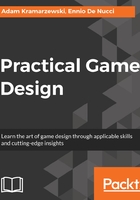
Planning design work
In the games industry, it's usually the project manager who creates and enforces production schedules. To do that, a list of task and assets to produce is assembled based on the design documentation. These tasks are then paired with estimates that (in the best-case scenario) come from the people who will actually end up doing said tasks. If the project is highly inventive and/or staff members inexperienced, more senior employees might get involved in helping with the initial schedule.
Unfortunately, in the words of strategist Helmuth von Moltke, "No battle plan ever survives contact with the enemy." First production schedules are likely to be very, very wrong. In the beginning, things will usually take longer than anticipated, and a lot of unknown problems, changes in direction, and missed tasks will emerge. Fortunately, as time goes on, your team's experience with the product grows and your tools are likely to improve, making the creation of future game content much quicker than initially anticipated. Good development studios and publishers acknowledge that games are very hard to plan accurately, and are prepared to be reasonably flexible.
No matter how fragile and changeable, plans need to be made right before the game can enter the production period. As a representative (or at least a valued member) of the design team, you're likely to be involved in the process. While deliverable tasks for artists (such as character models, animations, environments, and so on) are relatively easy to put into numbers and estimate, design tasks tend to be much more elusive. We'll cover some tips that might help you in tackling this problem!